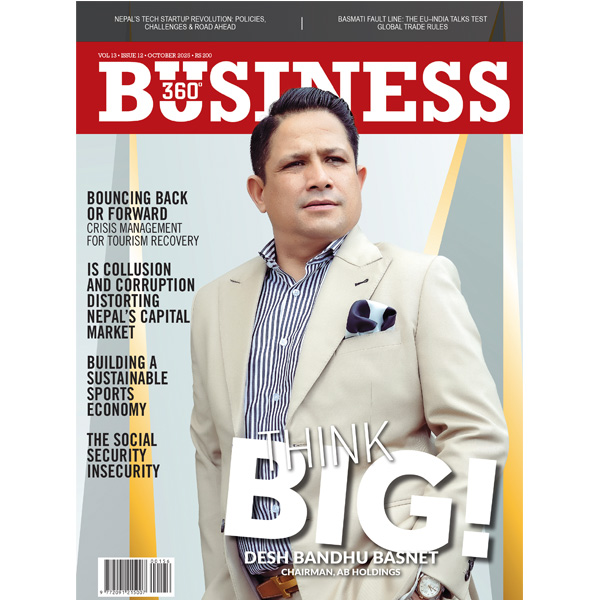
Ram temple in Ayodhya gives new push to religious tourism
The consecration of Ram Temple in Ayodhya on January 22 is being described as a civilisational change by the Lord’s devotees and adherents of Sanatan Dharma, popularly known as Hinduism. Astute watchers of politics and statecraft, however, perceive the event as a new dimension of realpolitik.
Come what may, the immediate impact of the incomplete shrine’s opening can be experienced in the sudden blossoming of hitherto sleepy Ayodhya’s economy. Religion and spirituality apart, Ayodhya’s citizens are finding their pockets bulging. A Ram Rajya of sorts seems to be setting in.
Studies and estimates by global brokerage firm Jefferies show that $10 billion has already been invested by the governments of India and Uttar Pradesh in infrastructure like new airport, refurbished railway station, townships, urban development projects, highways and roads, civic services, hospitality, travel ancillaries, etc. Further, the government plans to produce enough solar power to meet the entire needs of Ayodhya by year 2028. To begin with, 150 acres of land has already been allocated to India’s largest public sector power generation company for the purpose.
No wonder then that real estate prices have skyrocketed in Ayodhya as the town is now expected to receive 50-100 million pilgrims and religious tourists annually. Lord Ram’s birthplace is bursting at its seams accommodating the surge of the faithful since the January 22 pran pratishtha of Ram Lalla’s idol depicting him as a five-year-old child. The Ram temple trust, administration and the police are being put to severe test by the fervour of lakhs of pilgrims pouring in from across India and abroad.
Let us not forget that the Lord’s wife Sita belonged to our very own Nepal. Numerous priests and devotees from our country are reaching Ayodhya with gifts for their most famous and revered daughter and son-in-law.
The multiplier effect of the faith-driven activity is visibly boosting Ayodhya’s economy – bottom upwards. The citizenry is benefiting at all levels. The Ram Temple has so far cost the independent temple trust Rs 1,800 crores – all collected through private contributions and donations. Existing and upcoming hotels are busy hunting talent for 20,000 vacancies at various levels. Much more is bound to follow before the construction of the 75-acre temple complex gets completed by Fiscal Year 2025.
Religious tourism in India is projected to cross the $443-billion mark by FY 2033, growing at a compound annual growth rate (CAGR) of 8%. The room for growth is immense as overall tourism contributes only 6.8% to the GDP which is way below tourism’s share in most emerging and developed countries. But it needs to be noted that religious travel currently forms the biggest segment of tourism in India.
I have personally seen how religion can transform the socio-economic pattern of a place provided things are handled with care, devotion and selflessness. As a government-appointed office-bearer of the Pashupatinath Temple trust in Kathmandu, I was actively involved in the maintenance, renovation and development of the renowned shrine and its premises for a considerable period.
At a time when the human soul is getting wearied by the scorching pace of modern life, places of worship and spiritual uplift can serve as healing touch. Money and gadgets are failing to ensure our physical, mental and emotional well-being. The mind and the spirit are breaking down. It is no surprise that the world market for psychotropic drugs exceeded $20 billion in FY 2022. Can internally devastated humans manage to be effective economic performers? So, why shouldn’t business and religion be co-travellers in the journey of life?
Sanatan dharma (eternal righteousness) or Hinduism suggests four purusharthas (objectives or goals) for human beings – Dharma, Artha (prosperity or economic values), Kama (pleasure, love and desire) and Moksha (liberation and self-realisation). Why can’t action and renunciation be companions in the spirit of nishkam karma?
I often wonder why proximity between faith and business is often eyed with suspicion when both can inspire each other. After all, humankind has been witness to this phenomenon for ages, across faiths and continents.
Islam supports individual economic freedom, right to private property along with the need to serve the common good. Let us not forget that Prophet Muhammad was a merchant. Over two million Muslims from 160 countries reached Mecca for Haj in 2023. Saudi Arabia’s prince Mohamad bin Salman’s Vision 2030 includes promotion of religious tourism to overcome the kingdom’s dependence on petroleum revenue. Saudi haj tourism market is estimated to grow at 7% CAGR. Over three million hajis are expected to visit Mecca each year by FY 2032, adding $350 billion to the country’s coffers.
According to America Magazine’s the Jesuit Review 2022, financial income from commercial investments, real estate management and self-generated services like hospitals, universities, etc. accounted for 65% of the $887-million income in FY 2022 for the Vatican. Donations for different Vatican projects earned 24%.
Even senior secondary students of economics would be aware of the roots of capitalism in the Christian Catholic thought and faith. The Catholic Church of the Middle Ages (13th century) added religious value to hard and good manual work, separated the creator from the creature, and accorded respect to the market. Work, thus, became not merely a necessity but also gained moral significance, emphasising collaboration and unity for greater good of humanity.
Isn’t it time to draw religion and economics closer?






